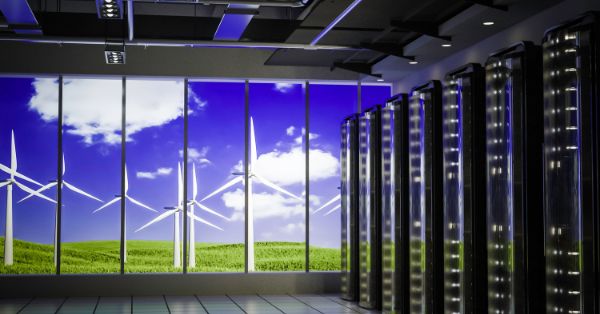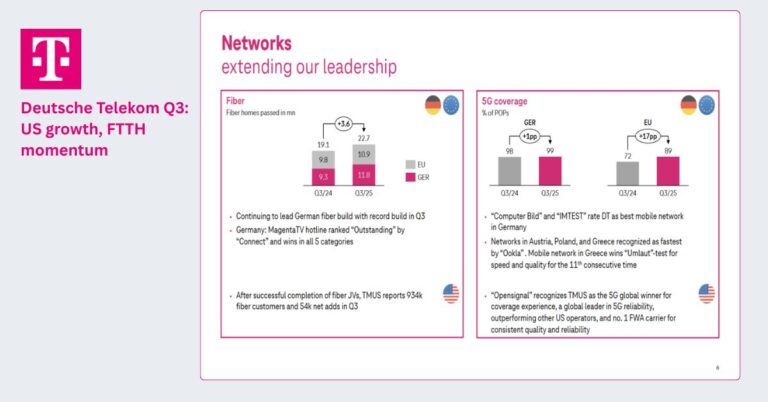Introduction: MWC 2024: Artificial Intelligence (AI) and GenAI Announcements
The Mobile World Congress (MWC) 2024 served as a pivotal moment in the ongoing evolution of artificial intelligence (AI), where industry leaders converged to showcase the transformative potential of AI-driven innovation. Against the backdrop of rapid technological advancement, MWC 2024 provided a platform for stakeholders to explore the multifaceted impacts of AI across various sectors, ranging from telecommunications and healthcare to digital safety and ethics. As AI continues to permeate every aspect of our digital ecosystem, MWC 2024 underscored the imperative for collaborative efforts and responsible deployment to harness AI’s potential for driving sustainable growth and societal progress.
Key Announcements from MWC 2024
Below are the key announcements from MWC 2024, highlighting the diverse range of AI innovations and initiatives unveiled at the conference:
Honor optimistic as AI-driven Magic6 Pro goes international

Honor unveiled its AI-driven strategy for enhanced cross-OS interaction and introduced the Magic6 Pro smartphone globally at MWC24, promising user-centric innovation.
- Honor unveiled an AI-empowered strategy at an event in Barcelona, introducing advanced features to its devices and emphasizing open collaboration in the AI era.
- Demonstrated innovative eye-tracking technology on the Magic6 Pro, enabling hands-free car control, illustrating AI’s potential to enhance smartphone-vehicle interaction.
- The Magic6 Pro features an enhanced camera system with AI capabilities, including a larger training database and an AI motion-sensing capture for high-definition moments.
- Honor’s commitment to the AI era aims to meet consumer needs with cutting-edge technology, as stated by CEO George Zhao.
- The Magic6 Pro, already released in China, boasts a triple camera, a 6.8-inch highly durable screen, and a 5,600mAh battery.
- During the event, Honor also announced the global launch of the MagicBook Pro 16 PC.
BT’s tech leader supports AI for broad business effects

BT’s Harmeen Mehta emphasized AI’s role as a business lever rather than just a tech solution, detailing its application within the company.
- BT emphasizes AI and generative AI as pivotal for reinventing business processes, necessitating involvement across the entire organization.
- Generative AI is seen as essential for enhancing human potential within the company, aiming to serve current and future customer needs better.
- AI’s impact is transforming the telecom industry, with BT leveraging the technology to innovate in service delivery to consumers and businesses.
- BT’s AI research has led to significant value creation, with expectations of accelerating new product and service development.
- The company acknowledges innovation pace as its biggest challenge, stressing AI’s irreversible integration into daily business operations.
- BT highlights a competitive urgency in AI adoption, suggesting a narrow window for it to remain a differentiator before becoming a standard in corporate strategy.
- The discussion on AI’s critical role in telecoms will continue at the “Can Telcos Afford Not to be Part of the AI Race” session.
Google’s DeepMind Chief Addresses AI’s Challenges with Digital Imagery
Image Credit: Google DeepMindDeepMind Technologies’ leader acknowledges the challenges with Google’s Gemini AI in generating appropriate images and outlines plans for swift resolution and exploration of generative AI’s full potential.
- Demis Hassabis of DeepMind noted unintended outcomes from Gemini’s image-generating feature, especially regarding historical figures, in a recent MWC keynote.
- Reports have surfaced about Gemini producing culturally insensitive images, prompting a reevaluation of its universality-focused design.
- Hassabis acknowledged the application of this feature to historical figures as overly broad, reflecting the complexities of managing AI expectations.
- The problematic feature is temporarily disabled for adjustments, with plans for a quick restoration.
- The discussion extended to the misuse of genAI by malicious entities, emphasizing the need for industry-wide dialogue on safe and beneficial AI deployment.
- Hassabis highlighted genAI’s positive impacts, particularly in medical research, including significant advancements in protein study, potentially accelerating pharmaceutical development.
- The release of OpenAI’s ChatGPT sparked public interest and illustrated the potential and flaws of early-stage genAI, with Hassabis optimistic about future innovation and the evolution of digital assistants and device form factors.
Operators Embrace a Future Driven by Bold AI Initiatives

Telstra CEO Vicki Brady highlights the company’s goal to transform into an AI-driven leader in Australia, emphasizing the importance of partnership, talent investment, and cloud infrastructure.
- During a keynote on The Digital Vision for Telcos, Brady stressed the necessity of collaboration for AI integration, citing Accenture and Microsoft as vital partners alongside customer and cross-sector engagements.
- AI strategy is viewed as a comprehensive business approach aimed at addressing significant internal challenges and seizing opportunities.
- Telstra has implemented generative AI tools, like the Ask Telstra digital assistant, to enhance customer service by enabling staff to access internal resources efficiently.
Telecoms Identified as Key to AI-Driven Efficiency Enhancements
A study commissioned by Liberty Global shows that AI could augment 50% of jobs in the US, EU, UK, and Switzerland, heavily relying on telecom networks.
- Ernst & Young’s research for Liberty Global indicates telecoms are vital for AI to enhance seven in ten jobs, promising significant efficiency improvements.
- The “Wired for AI” report underscores the telecom sector’s pivotal role in spreading AI’s socioeconomic benefits.
- AI adoption in telecom could save $33 billion annually in wages, with the US, Germany, the UK, and France seeing the largest benefits.
- Liberty Global highlights AI’s potential in transforming telco operations, from improving network efficiency to enhancing customer services and operational processes.
- CEO Mike Fries, speaking at MWC24, expressed his intense interest in AI, emphasizing the need for a strategic and focused approach to its adoption as a transformative force.
Telecom Giants to Establish AI Joint Venture
The Global Telco AI Alliance plans to create a joint venture aimed at crafting Large Language Models (LLM) tailored to the telecom sector.

- SK Telecom, e&, Singtel, Deutsche Telekom, and SoftBank Corp, members of the Global Telco AI Alliance, announced at MWC24 their intention to form a joint venture for telecom-specific AI development.
- This venture aims to produce AI models for languages prevalent in the partners’ markets, with future plans to include more languages.
- The initiative seeks to enhance customer service through digital assistants, aiming to serve a combined customer base of 1.3 billion across 50 countries.
- Established in July 2023, the alliance added SoftBank as a recent member, focusing on creating AI solutions for the telecom industry.
- Progress in developing these specialized AI models has begun, with a focus on multilingual support and collaboration with academic and language experts to include underrepresented languages.
Qualcomm Introduces AI-Driven Technological Advances
Qualcomm positions itself as a catalyst for digital transformation with its new intelligent on-device computing and advanced wireless connectivity solutions, aligning with the AI trend at this year’s conference.

- Qualcomm’s AI Hub emerges as a key innovation, offering a collection of over 75 optimized models to facilitate easier technology integration for app developers, enabling model operation on cloud-hosted devices with minimal coding.
- The launch of the Snapdragon X80 5G modem-RF system is aimed at embracing 5G-Advanced and non-terrestrial network (NTN) advancements, marking a first in six-carrier aggregation (6CA) and satellite communications integration in a 5G chipset.
- Additionally, Qualcomm revealed FastConnect 7900, an AI-enhanced connectivity suite supporting Wi-Fi 7, Bluetooth, and ultra-wideband, promising significant improvements in power efficiency, network response times, and data handling capabilities.
Microsoft Forms Strategic Alliance with Mistral AI, Unveils AI Ethics
At MWC24 Barcelona, Microsoft’s Brad Smith introduced ethical AI deployment guidelines and announced a significant partnership with Mistral AI, expanding beyond its OpenAI collaborations.

- Microsoft’s new partnership with Mistral AI marks a diversification from its substantial $13 billion investment in OpenAI, signaling a broad commitment to AI development.
- The collaboration, highlighted in Smith’s MWC24 keynote, aligns with Microsoft’s AI Access Principles, emphasizing wide-ranging company partnerships for AI advancement.
- Mistral AI will leverage Microsoft’s data centers for training and deploying AI models, making them accessible to developers and users through Azure’s cloud service.
- Smith emphasized Microsoft’s focus on both proprietary and open collaborations, aiming to facilitate the distribution of AI models to developers and consumers.
- Microsoft operates nearly 1,600 AI models in its data centers, with 1,500 being open-source, ensuring widespread accessibility to its AI technologies.
- While financial details of the Mistral AI partnership were not disclosed, the initiative reflects Microsoft’s broader strategy to foster AI innovation, competition, and adherence to regulatory standards.
- Smith outlined three core principles guiding Microsoft’s AI endeavors: promoting innovation, complying with international laws, and building extensive AI partnerships, emphasizing access, fairness, and societal responsibility.
- Microsoft supports customers’ freedom to move their models and data across different data centers and clouds, underscoring its commitment to user empowerment and ethical AI practices.
Telenor CEO Calls Attention to Digital Safety and AI Risks
At MWC Barcelona 2024, Telenor’s Sigve Brekke underscores the importance of child safety online and addresses the challenges posed by AI alongside human rights groups.
- Sigve Brekke discusses the telecom industry’s role in fostering societal growth, with a focus on child safety online and AI risk mitigation, during a panel at MWC Barcelona 2024.
- Brekke joined forces with Katarina Mellstrom of Global Child Forum, Lara Perdomo of UNICEF Spain, and Tayma Abdalhadi of ITU’s Generation Connect to spotlight pressing digital age issues.
- Telenor’s initiatives include a content filtering system to block illegal online content and educational programs on cyber threats and misinformation.
- The company’s collaboration with UNICEF and Pakistani authorities aims to boost local community access to education.
- Mellstrom praises telecom operators like Telenor for their commitment to launching projects with NGOs to tackle digital safety concerns.
- With 360 million people still offline and children constituting a significant portion of internet users, Mellstrom warns of potential digital segregation.
- The urgency to educate young netizens on discerning credible information becomes critical as AI technologies, such as Deepfake, become more prevalent.
HPE and Juniper Networks Outline Advantages of Their $14 Billion Merger
Leaders from HPE and Juniper Networks discuss how their $14 billion merger, pending regulatory approval, will benefit mobile operators by merging IT and communications infrastructure with AI.

- Shortly after HPE’s acquisition announcement of Juniper Networks, CEOs Antonio Neri and Rami Rahim share insights on the deal’s customer benefits during a keynote.
- Neri marks the deal as a pivotal moment amid AI advancements, emphasizing the merger’s potential to foster societal and business progress through enhanced connectivity and sustainability.
- Highlighting AI’s demands for innovation, Neri envisions the combined strengths of HPE and Juniper accelerating performance and power in the AI-driven technology landscape.
- With Juniper set to integrate into HPE’s networking division under Rahim’s leadership, the merger aims to amplify solution relevance for service providers facing current challenges.
- Rahim eagerly anticipates demonstrating the unified company’s capabilities to customers, pending successful navigation through regulatory approvals.
Telenor advocates for a mindset shift for network self-reliance propelled by cloud, AI, and virtualization technologies
Telenor’s Jannicke Hilland advocated for a mindset shift towards automation and data analytics to enhance decision-making.
- Hilland identifies organizational culture and the need for a suitable partner ecosystem as major hurdles to achieving autonomous networks.
- Success requires the entire value chain’s involvement and adaptability to integrate innovations into telecom services, a task telcos can’t likely achieve alone.
- Interoperability issues stem from partners having distinct systems and workflows, posing barriers to collaboration.
- Integration challenges involve aligning technical standards and tools for new technologies and autonomous network adaptation.
- Recent years have seen significant advancements in autonomous networks, propelled by cloud, AI, and virtualization technologies.
- Cross-domain closed-loop orchestration marks a key evolution stage, enabling mature, adaptable networks through seamless integration across various domains. This orchestration is seen as crucial for achieving fully autonomous networks.
China Mobile Highlights Need to Close B2B Technology Divide hindering industrial evolution and AI application
China Mobile’s chairman, Yang Jie, emphasizes the challenge of disparities in computing power and data-sharing capabilities among businesses, hindering industrial evolution and AI application.
- In the opening keynote, Yang Jie pointed out significant disparities in data sharing scale, quality, and integration, alongside uneven distribution of high-performance computing across different organizations and regions.
- There’s a noted variation in different industries and groups’ proficiency in harnessing and implementing AI technologies.
- To address these issues, Yang advocates for the expansion of 5G networks to ensure high-speed, universal connectivity for businesses, alongside integrating AI to foster transformative opportunities.
- Yang calls for the democratization of computing power provision, emphasizing its necessity and accessibility akin to basic utilities like water and electricity.
Exploring the Synergy of 5G and AI at the Network Edge
Amdocs’ Anthony Goonetilleke discusses the transformative impact of integrating 5G and AI technologies at the edge, promising significant advancements across various sectors.

- Anthony Goonetilleke highlights the transformative capabilities of 5G and AI convergence at the edge, predicting enhancements in AR/VR and the facilitation of smart cities.
- The demand for edge computing is set to rise, bolstering autonomous vehicles and automated industrial processes by bringing computing closer to the application.
- Generative AI, particularly Large Language Models (LLM), stands to gain, with potential for real-time applications at the edge leading to production-level deployments.
- This technological integration is expected to revolutionize sectors like telecom, healthcare, manufacturing, and urban management, offering new possibilities for AI-driven services.
- Goonetilleke emphasizes the importance of telecom operators investing in the necessary infrastructure and adapting to new business models to leverage edge computing and AI fully.
- He also points out the challenges of infrastructure cost, regulatory hurdles, and ensuring data security and algorithm integrity as critical areas needing attention for successful implementation.
ZTE Debuts AI-Enhanced 5G 3D Tablet at MWC24

At MWC24 Barcelona, ZTE introduced a 5G version of its pioneering 3D tablet alongside new Nubia and Red Magic products, marking a first in the industry.
- ZTE’s Nubia Pad 3D II, an advanced iteration of last year’s model, features sophisticated deep-learning algorithms for converting 2D content to 3D without external gadgets.
- This tablet showcases a 12.1-inch screen with a 144Hz refresh rate and 2560×1440 resolution, enhanced with AI for dynamic eye tracking.
- It is equipped with dual 13MP rear and dual 8MP front cameras and enables “multi-display” interaction with other compatible devices.
- Powered by the Qualcomm Snapdragon 8 Gen 2 chipset, the Nubia Pad 3D II is 5G-ready, supporting major global bands.
- ZTE also launched several Nubia smartphones, including the premium Nubia Z60 Ultra, the Nubia Flip 5G targeting younger demographics, and models focused on gaming and music.
- The Red Magic 9 Pro series was introduced as ZTE’s latest venture into photography-centric smartphones.
NTT Data and Schneider Electric launch AI Edge collaboration
NTT Data and Schneider Electric are addressing the surge in edge device data with a new solution.
- NTT Data and Schneider Electric announced a partnership at MWC24, integrating edge computing, private 5G, IoT, and modular data centers for generative AI applications.
- Their joint solution combines NTT Data’s Edge as a Service with Schneider Electric’s EcoStruxure to enhance energy efficiency and manage compute-heavy tasks at the edge.
- Shahid Ahmed from NTT highlighted the crucial role of processing data from edge devices in future digital transformation, supported by their report showing a 70% increase in enterprise edge adoption.
- The partnership has resulted in the deployment of the first private 5G-enabled EcoStruxure Data Center at Marienpark Berlin, showcasing the initiative’s practical application.
Rakuten Symphony Partners with OpenAI for Network Innovation
Rakuten Symphony teams up with OpenAI to create AI-driven telecom applications, aiming to enhance network management and customer service.

- Rakuten Symphony and OpenAI plan to leverage Rakuten’s open RAN knowledge and OpenAI’s AI expertise to address telecom challenges.
- The partnership focuses on creating AI solutions tailored to the specific needs of telecom operators, enhancing network building and management.
- OpenAI will contribute to Rakuten’s efforts in developing real-time network issue detection and resolution services, aiming to boost network performance and operations.
- This collaboration extends the existing strategic alliance between Rakuten and OpenAI, combining their strengths in open RAN technology and AI.
- Rakuten’s Chief Data Officer, Ting Cai, emphasizes the critical need for the telecom industry to embrace modern technologies like open RAN, cloud, and AI to stay competitive and innovative.
Major companies ally for AI RAN drive
Key tech leaders, including Ericsson, Nokia, Samsung, Microsoft, and T-Mobile US, have joined the AI-RAN Alliance to integrate AI in transforming radio networks.

- The AI-RAN Alliance includes major entities like SoftBank, Arm, Nvidia, AWS, Northeastern University, and Deepsig, focusing on machine learning in wireless tech.
- Its goals are to enhance RAN infrastructure efficiency, reduce power consumption, and introduce 5G and 6G innovations while improving business opportunities.
- A priority is integrating existing networks with new AI-driven advancements to boost spectral efficiency.
- Nvidia’s Ronnie Vasishta emphasized building AI benefits into the RAN ecosystem, highlighting data sharing as key to unlocking AI’s efficiency in telecom.
- The alliance views AI as transformative for wireless deployment, promising widespread innovation and operational improvements in telecommunications.
Gartner Highlights Key Trends in 5G, AI, and Cybersecurity at MWC Barcelona 2024
Gartner provides in-depth insights into the evolving landscapes of 5G, AI, and cybersecurity, offering a comprehensive analysis to shed light on the technologies shaping MWC Barcelona 2024.

- Gartner, a renowned technology research firm, aims to clarify and provide context to the flurry of technological advancements announced at MWC Barcelona 2024, focusing on 5G, AI, and cybersecurity.
- The firm underscores the critical role of 5G in global economic growth, predicting a $1 trillion contribution by 2030.
- With 70% of executives viewing 5G-connected devices as an emerging threat, Gartner emphasizes the importance of understanding and navigating the complexities of 5G deployment and its implications for operational technology.
- Gartner’s insights reveal a significant shift towards open and virtualized 5G networks, highlighting the need for communications service providers (CSPs) to adopt scalable and energy-efficient platforms to meet the demands of high throughput and low-latency networking.
- The forecast for enterprise sites utilizing 5G for primary or backup connectivity is set to rise from 2% in 2023 to 15% by 2027, signaling a growing adoption of 5G solutions across various sectors.
- With the advent of 5G-Advanced (5G-A) and the anticipation of 6G around 2030, Gartner advises companies to revisit their 5G strategies, considering the ongoing developments and the potential features and benefits of upcoming cellular standards.
- In the realm of AI, Gartner predicts significant impacts on employee experience and productivity, with generative AI becoming a standard tool in personal and team productivity applications by 2028.
- Additionally, AI agents are expected to attend over 25% of meetings by 2025, indicating a shift in human engagement and attendance.
- The firm also highlights the transformative potential of AI in cybersecurity, projecting that by 2028, multiagent AI will augment rather than replace staff in threat detection and incident response, rising from 5% to 70% of AI implementations.
- Gartner’s analysis extends to IT infrastructure and operations, where GenAI is poised to automate 35% of network configuration and troubleshooting activities by 2028, demonstrating the accelerating integration of AI technologies in IT management.
- Cybersecurity remains a pressing concern, with Gartner projecting a significant increase in end-user spending for information security and risk management, reaching $209 billion in 2024.
- The report emphasizes the ongoing need to adapt security operating models to protect against evolving digital threats, particularly in regions such as North America and Western Europe, which lead in security spending.
- Overall, Gartner’s contributions to MWC Barcelona 2024 offer valuable insights into the future of technology, highlighting the critical areas of 5G, AI, and cybersecurity that businesses and technology enthusiasts should watch closely.
5G Evolution, GenAI, and Emerging Technologies to Dominate 2024 Trends

GSMA Intelligence forecasts generative AI, the next 5G phase, private wireless, and non-terrestrial networks as pivotal trends shaping the future mobile market.
- The “Global Mobile Trends 2024” report by GSMA Intelligence marks significant progress in mobile technology, especially with widespread 5G deployments and its expansion into emerging markets.
- A second 5G wave, featuring standalone and 5G-Advanced investments, began in 2023 and is expected to continue through 2024, despite these advancements not significantly boosting mobile revenue growth.
- Economic factors and the challenge of sustaining price premiums without a definitive “killer app” have impacted revenue, with the B2B sector focusing on private wireless, edge, and IoT still evolving.
- Generative AI emerges as a major force, anticipated to enhance service intelligence and marketing strategies in 2024.
- The demand for private 5G networks is reshaping industry competition, with major vendors possibly leading projects, reversing traditional roles with operators.
- The integration of non-terrestrial network (NTN) standards into 5G by the 3GPP marks a strategic move towards accessing untapped revenue streams and fostering cross-industry partnerships for comprehensive 5G B2B service delivery in various sectors.
Palo Alto Networks Forms Strategic 5G Security Partnership, leveraging its AI-driven solutions
Palo Alto Networks collaborates with leading companies like Celona, Druid, Ataya, NETSCOUT, NVIDIA, and NTT DATA to enhance private 5G network security, leveraging its AI-driven solutions for comprehensive protection.

- Palo Alto Networks announces a collaboration with top Private 5G partners to offer an end-to-end security solution, responding to the $1tn economic impact expected from 5G by 2030.
- The partnership aims to simplify the deployment of AI-enhanced security across private 5G networks, combining Palo Alto’s 5G Security with partner technologies for a unified security framework.
- Companies like Celona, Druid, and Ataya will integrate their private 5G network solutions with Palo Alto Networks for enhanced radio network security and data protection.
- NETSCOUT’s partnership focuses on providing deep network visibility, which is essential for intelligent security policy creation and threat detection in 5G environments.
- NVIDIA collaborates to ensure scalable 5G security, optimizing AI applications for speed and data sovereignty and addressing the needs of modern enterprise networks.
- NTT DATA brings a comprehensive technology stack and expert consulting to support the swift and secure deployment of private 5G networks, essential for leveraging Generative AI applications at the edge.
- These strategic alliances underscore Palo Alto Networks’ commitment to securing the 5G ecosystem and facilitating secure, AI-ready private 5G infrastructure for enterprises.
Key Takeaways from MWC 2024 AI Announcements
MWC 2024 was rich in announcements, each signaling a leap forward in AI’s integration into our daily lives and industries. Among the notable revelations were Honor’s Magic6 Pro going international, BT’s reinforcement of AI as a business catalyst, DeepMind addressing AI’s imagery challenges, Telstra’s ambition for AI leadership in Australia, and the establishment of the Global Telco AI Alliance. Furthermore, Qualcomm’s unveiling of AI-driven technological advancements, Microsoft’s ethical AI deployment, Telenor’s focus on digital safety, and the HPE-Juniper merger showcased the depth and diversity of AI’s impact.
AI-Driven Smartphones and PCs: Honor’s Magic6 Pro brings innovative AI features to the global stage, including eye-tracking technology for car control and an advanced AI camera system. This move, complemented by the global launch of the MagicBook Pro 16 PC, underscores the industry’s push towards more intuitive, user-centric technology.
AI as a Business Lever: Leaders from BT and Telstra emphasized the critical role of AI and GenAI in transforming business processes and service delivery. These discussions highlighted AI’s potential to reinvent business models and enhance operational efficiency across sectors.
Challenges and Ethics in AI: DeepMind’s Demis Hassabis addressed the challenges in AI-generated imagery, stressing the importance of responsible AI use and the industry’s need for a collective effort in ensuring AI’s beneficial deployment, especially in sensitive areas like digital imagery and child safety online.
Telecom’s Role in AI Deployment: The formation of the Global Telco AI Alliance and insights from telecom leaders revealed the sector’s crucial position in advancing AI technology, from enhancing customer service to improving network efficiency and security.
Innovative AI Collaborations and Mergers: Strategic alliances, such as Microsoft’s partnership with Mistral AI and the significant merger between HPE and Juniper Networks, demonstrate the industry’s commitment to leveraging AI for digital transformation and improved connectivity solutions.
AI’s Impact on Industry and Society: Discussions around AI’s role in job augmentation, the necessity of ethical AI practices, and the potential for AI to bridge the B2B technology divide highlighted the technology’s broad implications for the workforce, societal norms, and industrial evolution.
Conclusion
MWC 2024 has set a new benchmark for innovation in the AI and GenAI landscape, showcasing a future where technology enhances every facet of personal and professional life. The announcements and discussions during the event painted a vivid picture of a world on the cusp of a technological renaissance driven by AI’s promise to transform industries, redefine connectivity, and elevate human experiences. As we look forward to the advancements and applications of AI in the coming years, MWC 2024 will be remembered as a catalyst for this transformative journey, emphasizing the importance of collaboration, ethical considerations, and the relentless pursuit of innovation.









































